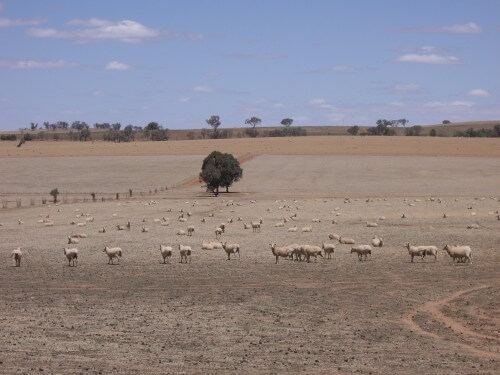The United States and Israel can draw lessons from the nine turbulent years that befell Australia

For most of the past decade, Australia has experienced the worst and most continuous drought in its recorded history. The first time the Murray River did not reach the sea was in 2002. Fires consumed large areas of the continent, and sandstorms covered the main cities for days. The size of the flock in Australia dropped by 50%, and there were years when the rice and cotton crops collapsed. Tens of thousands of farming families lost their livelihood. The drought ended in 2010 with heavy rains and floods.
Australia's "Millennium Drought" is a warning to residents of dry and drought-prone areas. What happened in Australia could also happen in America, and the consequences for the region and the nation as a whole would be devastating. But if we learn the right lesson from Australia's experience, we can avoid the worst of all.
The American Southwest is similar in some aspects to certain regions of Australia as they were before the drought. Here and here there are arid regions where thirsty cities and agriculture dependent on irrigation are straining the water supply and harming the ecosystem. The Colorado River no longer flows to the sea most years. The water level in the major reservoirs has been falling consistently over the past decade, and some analysts speculate that the largest will never be completely filled again. In both the US and Australia, the changing climate increases the chances of drought.
A growing body of evidence shows that climate change is affecting Australia's water woes. Since 1950, average annual rainfall has decreased by 15%, and researchers found that the average temperature in southeastern Australia between 1995 and 2006 was 0.3 to 0.6 degrees Celsius higher than the long-term multi-year average. The combination of increased evaporation and diminishing precipitation reduces soil moisture and reduces surface runoff, and droughts become more severe and frequent. The Australian scientists predict that by 2030 there will be a 35% to 50% decrease in water availability in the Murray and Darling River catchments and the flow near the Murray estuary will decrease by up to 70%.
The millennium drought did one thing well: it attracted attention. Australians responded to these extreme events with a wide range of technical, economic, regulatory and educational responses. The municipal water suppliers in Australia were required to take decisive and firm actions to save water and to invent new and innovative sources. They subsidized economical facilities such as double-volume flush tanks for toilets, they launched water-saving propaganda systems, and so on. From 2002 to 2008, water consumption per capita, which was already lower than in the US, decreased by 37%.
Other solutions focused on the utilization of unconventional sources such as the reuse of sludge ("grey water"), the collection of runoff from roofs of houses, and the treatment of wastewater. The five largest cities on the continent spend 13.2 billion dollars a year to double the amount of desalinated water - an amount that would provide 30% of today's municipal water consumption.
And even in the midst of the drought, Australia persisted with programs to restore water to natural aquatic ecosystems that are in dire straits. The government has not stopped plans to restore rivers and wetlands by reducing pumping from the Murray-Darling Basin by 22% to 29%. It invested $3 billion to purchase water from irrigation consumers to restore ecosystems. The supervisory authorities established water markets in the hope of improving the farms' water efficiency and reducing wastage. Despite the efforts to gradually reduce the subsidies until they are completely abolished, the government announced assistance in the amount of more than 6 billion dollars to improve the irrigation infrastructures and optimize them.
The states of the southwestern United States would do well to promote such reforms before a similar disaster befalls them. They must deal with complicated political issues, such as the development of water markets and their pricing, the expansion of programs to improve the efficiency and productivity of water use, the elimination of government subsidies that encourage waste and inefficient use of water resources in cities and farms, and reforms in agriculture. In view of the increasingly changing climate, smart planning of the water sector may mitigate the impact of severe and unexpected shocks that seem to inevitably come.
About the authors
Peter H. Gleick is the president of the Pacific Research Institute in Oakland, California, and Matthew Heberger is a research fellow there.

3 תגובות
In a drought, it's good for the rich. The study only encourages them to continue polluting the air.
Israeli researchers have gained considerable experience in solutions to droughts. where are they
Perhaps the token has finally fallen for the leaders of the MAZAT to realize that they must prepare for the preparation of a "comprehensive water plan" for their people
Instead of continuing to reproduce the past conflicts. Originally, there was not enough fresh water for everyone here in the "Fertile Arc".
The population. In contrast, solar or fossil energy (for now) is available and in huge quantities. The obvious conclusion is
To harness the energetic possibility for the purpose of creating the aforementioned water and on this occasion to break the cycle of hatred that nourishes
the need for struggles. True, this is a simplification to the point of stupidity, but who can honestly claim that the current model
It is the right and justified one, oh yes I remembered, this is how it was written 2500 years ago and so we must accept it "as a Torah from heaven".